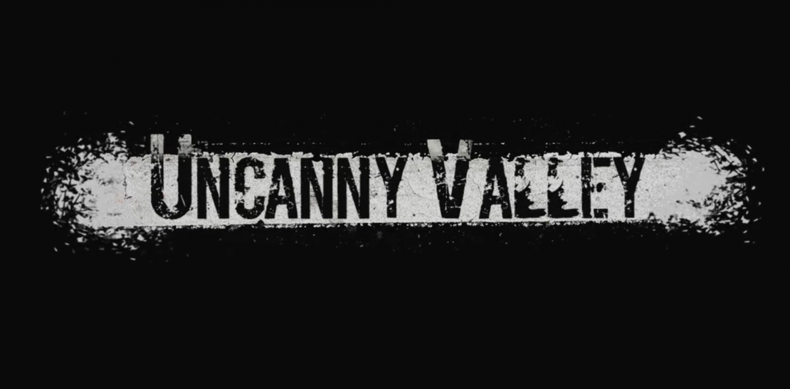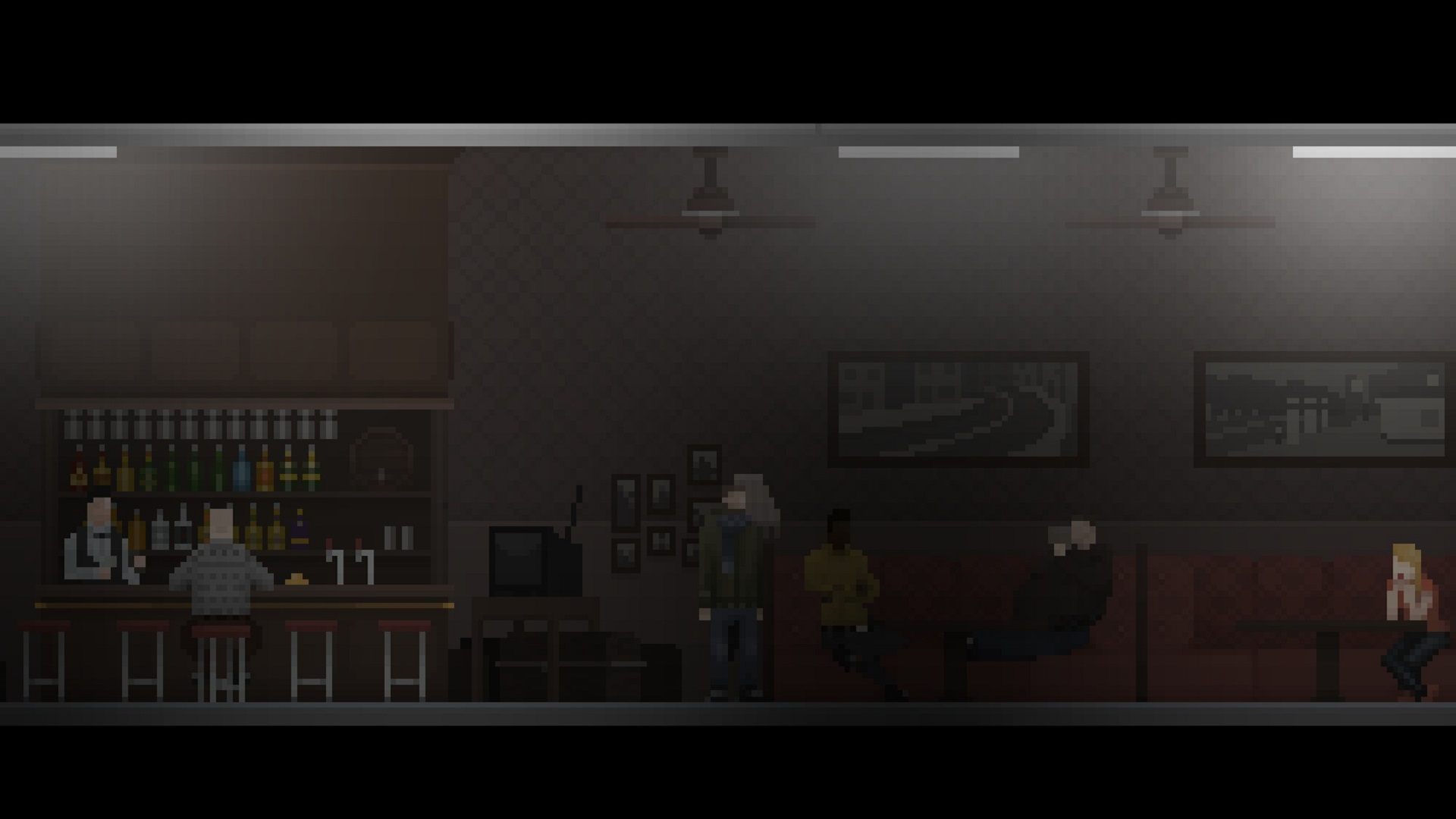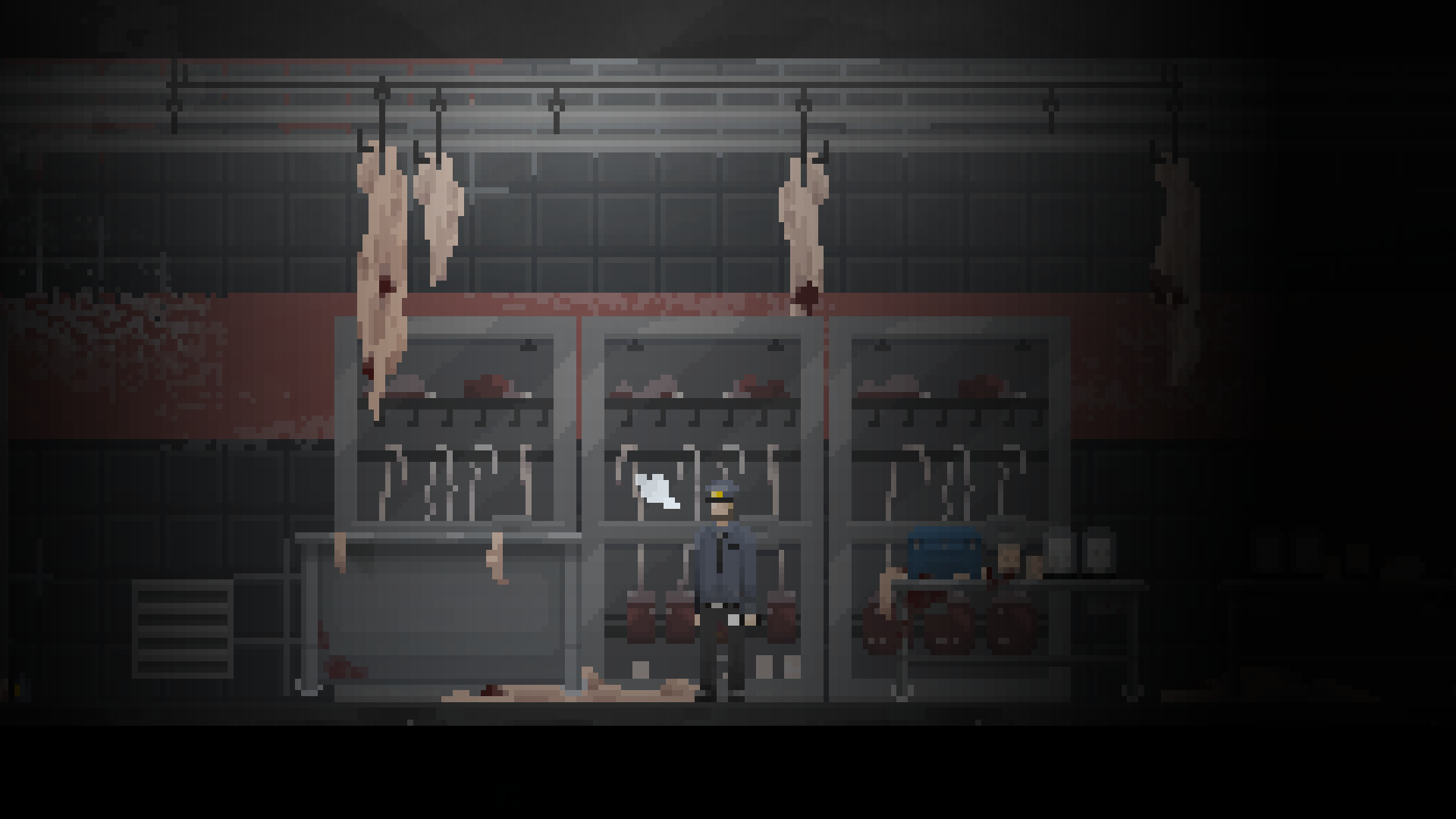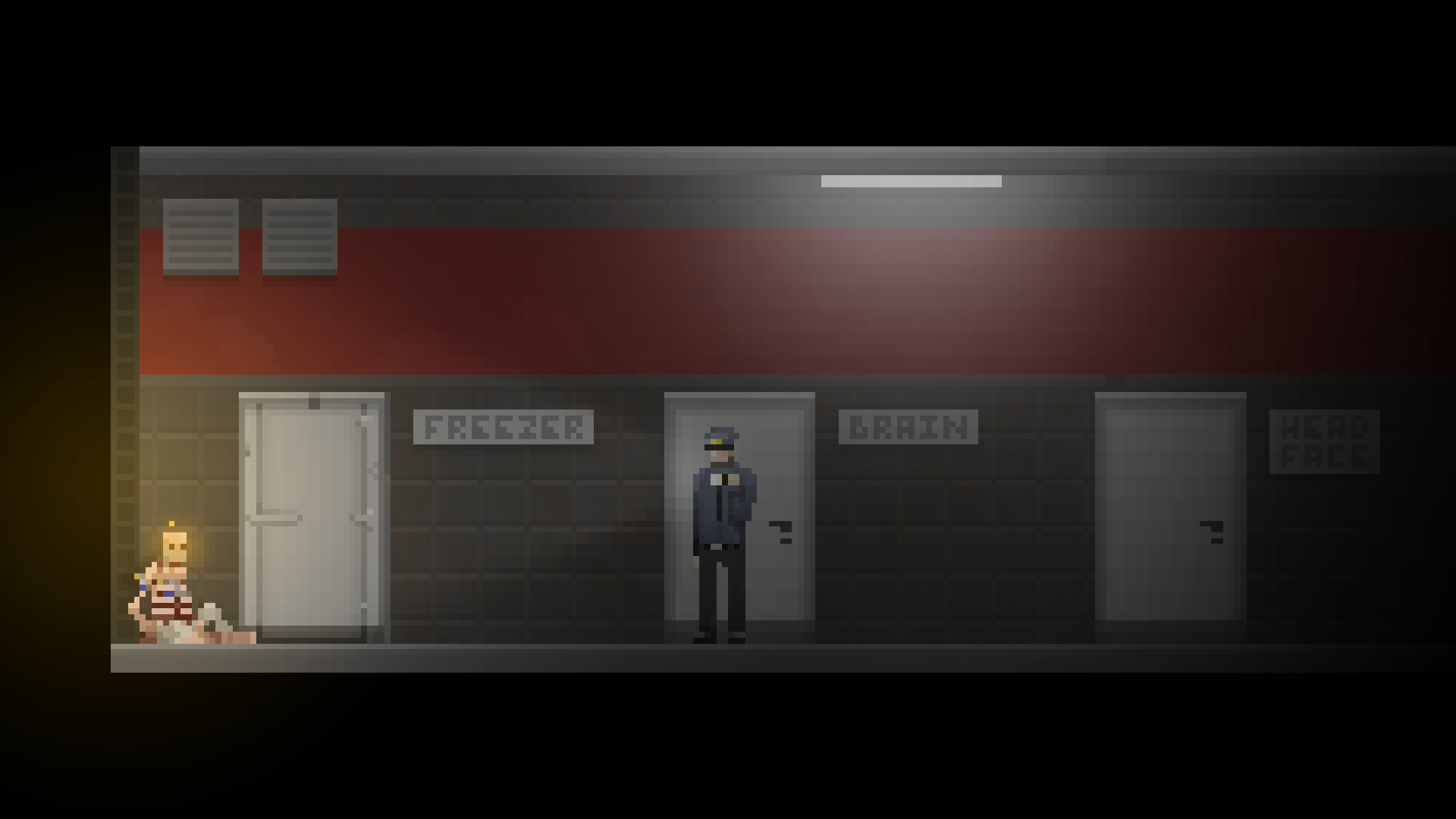February 7, 2017 (U.S.)
February 8, 2017 (U.K.)
Upon loading Uncanny Valley, you are greeted with a message from the developers that advises you that to get the most out the game, you should play through it multiple times. You are told that the choices you make during the course of the narrative will have meaningful consequences and will determine your fate, alluding to a game that has numerous different endings depending on what you decided to do in the events leading up to it. A promising concept, but one that sadly doesn’t quite manage to deliver.
The idea of a non-linear narrative is certainly an interesting one and Uncanny Valley starts strong, with an eerie introduction where our protagonist, Tom, is being chased through the streets by a mob of dark figures. You cannot escape them, and just as the mass of shadows overwhelms you, Tom wakes from his nightmare onboard a train. Shortly after, he arrives at the destination of his new job as a security guard for a mysterious, largely empty facility.
There are very few people at the facility, save for an overweight, cantankerous guard called Buck who takes the day shift and sits on his arse all day, and Eve, the cleaner who keeps the place spick and span for nobody in particular. Your job as the new security guard is to take the night shift from Buck, and much of your time is spent mooching about the complex looking at nothing in particular, reading emails and collecting audio tapes that can be listened to in a room on the first floor.
There isn’t much mystery as to what is or has happened at the facility–the game’s title gives much of the premise away–but the way that some details are slowly pieced together through the email and tapes is very promising and provides a sense of foreboding as to what is to come. Your shift is carried out under a timer, seven minutes to be exact, meaning you have limited time to investigate and find new details before you are expected to return to your room in the apartment block to sleep. If you don’t return in time, you will collapse on the floor to awaken again in your apartment ready to start another shift. Regardless of whether you return to your bed or succumb to tiredness at the end of each shift, you will sleep and be subjected to nightmarish chase dreams where Tom is perpetually being hounded down by the mass of shadowy figures, only to abruptly awake whenever they finally catch him. In all of my playthroughs, I never quite reached an understanding as to what these dreams represented despite there being a clear indication that they were included to form part of the back story. The idea that I was doing something wrong, but not knowing exactly what that was, for subsequent playthroughs was frustrating to say the least.
There appears to be a finite number of evenings of investigation before you are forced into the second part of the narrative and it is at this point that the game sort of falls apart a little. You can force this change in direction much sooner, and way before you have managed to gather any meaningful information at all. The first time I played it, I stole Buck’s car keys and took his car out for a spin just to liven up the gameplay and before I knew it, I was tortured and held captive. The game ended shortly after this, leaving me with no clue as to what had actually just happened. Everything prior to that point had been uneventful and fairly meaningless, and then I was inexplicably held captive. On another playthrough, I broke into Eve’s room on day three and stole a key card that enabled me to explore the lower levels of the facility and, once again, I was captured and tortured for no discernible reason.
In subsequent playthroughs, I found out a little more about what had happened at the facility, but as I said before, the game’s title reveals the mystery before it even gets chance to start. The emails that you can read are so numerous you can pretty much work out what has happened on the first evening. Furthermore, the tapes you can locate and listen to also reveal a lot, but it doesn’t take a genius to figure out who the person in the tapes is.
The atmosphere is suitably oppressive and the game does an excellent job of creating a panicky hopelessness when confronted with enemies. It also incorporates a consequence system, whereby if you fail in an objective rather than dying, you will suffer a trauma that makes the game going forward harder to play. For example, I broke my leg in one of my playthroughs and as a consequence I couldn’t bend down to enter a grate that would lead me to another area and presumably more clues. On another, I broke my arm which meant it was more difficult to use some of the tools like weapons or heavy objects. The idea that the things you do and the mistakes you make shape how the game turns out is definitely interesting and one that I would like to have explored in some more detail, but over time, I became frustrated by the obtuse nature of how the story unfolds. Furthermore, after each failure that leads to a particular ending, you are expected to start over again to try something different, but the beginning portion of the game is always the same. Predictably, this sequence becomes supremely dull and as such, fatigue set in to the point that I could barely be bothered to try another run through.
Uncanny Valley shows a lot of promise, it is just disappointing that it doesn’t manage to fulfil its potential. I love the idea that the narrative slowly reveals itself to you by playing multiple times, and that each playthrough you learn a little more, but sadly the mechanics of the game are unencouraging. Furthermore, there is too much scope for the player to completely miss the point of what is happening. Too many times in my attempts I did something that I wasn’t aware of the consequences, and I was transported to another location with no exposition or explanation as to how I got there. Subsequent playthroughs filled some of those gaps in, but a game that allows a player to be at the start of the story and then inexplicably arrive at the end without a suitable middle bit to explain is asking too much of them to keep trying over and over.
Great atmosphere
2D pixelated art style is really nice
Great concept
Poorly delivered concept
Obtuse storytelling can leave player confused
Early section is repetitive after a few playthroughs
Uncanny Valley shows a lot of promise, but the harsh reality of its non-linear narrative structure and reliance on multiple playthroughs to make sense of it all means it is asking too much in the face of the early game's uninspired, repetitive gameplay.








